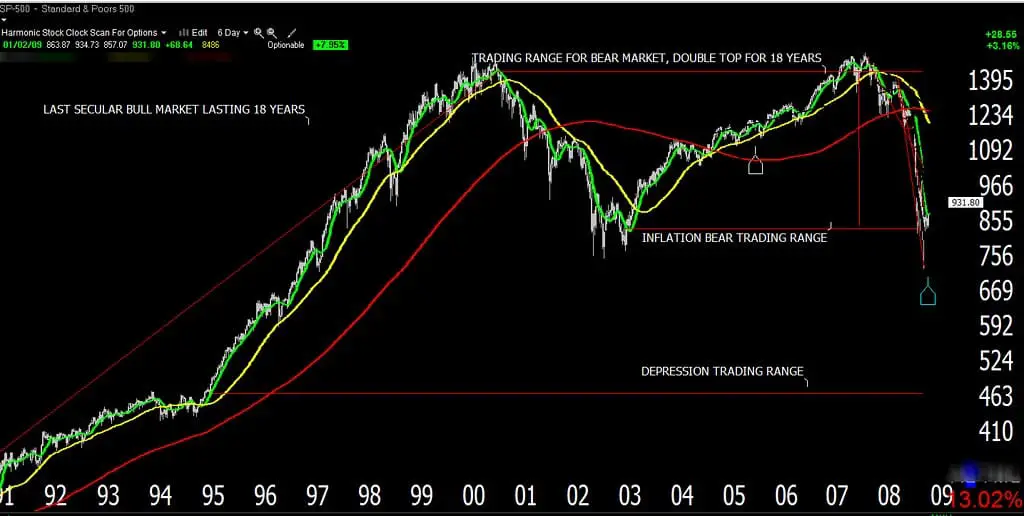In the US share market, the two most widely mentioned and hugely followed indices are Dow Jones Industrial Average (DJIA) and Standard and Poor’s 500 Index (SP 500).
The majority of market watchers prefer either of these two indexes to get a big picture view of the American stock market.
Key Takeaways
- DJIA has only 30 stocks, while S&P 500 has 500 stocks.
- DJIA is price-weighted, while S&P 500 is market-cap-weighted.
- DJIA includes only US-based companies, while S&P 500 includes US-based and international companies.
DJIA vs SP500
The difference between DJIA and SP500 is the listing of corporations in these indexes. SP500 represents a list of the top 500 large-cap American stocks. On the other hand, DJIA lists down the stock prices of the top 30 biggest American companies. Companies in either of the indexes could be the same, but their position in the respective index varies.

DJIA is the oldest stock market index in America. It was established in 1896 to keep track of the top manufacturing industries at the time, hence the name “industrial average”.
This index initially included 12 of the major manufacturing companies, but now it consists of the top 30 blue-chip stocks.
SP500 was established in 1957, and it was created to list companies from all economic sectors. This index represents the major 500 companies in the stock market.
The position of a company in the index is determined by a committee after evaluating factors such as market cap, public float percentage, earnings in the last 4 quarters, etc.
Comparison Table
| Parameters of Comparison | DJIA | SP500 |
|---|---|---|
| Definition | DJIA is a stock market index that lists the top 30 manufacturing companies in America | SP500 is a stock market index that tracks the top 500 large-cap American stocks |
| Establishment | DJIA is the oldest stock market index. It was established in 1896 | SP500 was created in 1957 |
| Companies Listed | DJIA was established to list down the top manufacturing companies | SP500 includes companies from all the economic sectors |
| Listing factors | DJIA only includes the companies that are industry leaders in a specific sector | SP500 evaluates different companies by considering various factors such as market cap, public float, etc |
| Examples | Coca-Cola, Johnson, and Johnson | Apple Inc, Microsoft, Amazon |
What is DJIA?
Dow Jones Industrial Average (DJIA) is an American stock market index that is one of the most widely followed indexes in America. It is the oldest market index and was created in 1896.
It was established to list down the top manufacturing companies or industries in America. Initially, it consisted of the 12 major manufacturing companies in America, and since then, it has grown to include the top 30 blue-chip stocks.
The list only includes the top leading companies or the market leaders in a specific segment of the industry. Hence most of the companies on the list are heritage companies that have been around for decades.
Changes in the list are not frequent. The list is reviewed only if the value of the index has gone down. To evaluate a certain stock, a special factor called the “dow divisor” is used.
This method of evaluation is specific for the stocks in this index, and the evaluation is done by the committee members of the DJIA index.
The list is very specific of the industries that are included. DJIA only represents companies from the manufacturing sector of the economy. For other sectors, such as transportation and utilities, DJIA has separate lists.

What is SP500?
Standard and Poor’s 500 Index is an American stock market index that lists the top 500 companies in the stock market. The companies listed in this index are the companies with the largest market capitalization on the New York Stock Exchange.
SP500 was established in 1957 as a means to track the top companies in the stock market, irrespective of the economic sector. Thus SP500 includes companies from all sectors of the economy.
SP500 evaluates a company thoroughly before indexing it into the list. The evaluation is done by considering different factors that determine the growth and the standing of the company.
The companies are evaluated on factors such as market capitalization, which must be $8.2 billion or more, the public float percentage, the earnings in the last four quarters, and liquidity as measured by price and volume.
Thus SP500 weighs a company according to the market cap. Hence, only the companies that have the largest impact on the US economy are included in the list.
The volatility of shares is higher in this index as the companies listed represent the various sectors in the US economy. The companies are also valued more frequently than other indexes.
Hence the position of the companies in this index changes more frequently.

Main Differences Between DJIA and SP500
- DJIA is a stock market index which lists the top 30 manufacturing companies in America. SP500 is a stock market index, and it lists the 500 blue chip stocks in the American stock market.
- DJIA is the oldest stock market index. It was established in 1896. Sp500 was created in 1957.
- DJIA only includes the top manufacturing industries or companies. SP500 includes companies from all sectors of the American economy.
- DJIA is very specific about the position of the company in the sector. Thus it only includes the industry-leading companies in any sector. SP500 evaluates different companies thoroughly before indexing them in the list. The evaluation process includes many factors, such as market cap, public float percentage etc.
- Some of the companies included in DJIA are Coca-Cola, Johnson and Johnson etc. Companies like Apple INC, Amazon, and Microsoft INC are examples included in SP500.

- https://onlinelibrary.wiley.com/doi/abs/10.1002/(SICI)1096-9934(199912)19:8%3C911::AID-FUT4%3E3.0.CO;2-Q
- https://www.sciencedirect.com/science/article/pii/S0957417415002110
- https://jpm.pm-research.com/content/28/1/44.short
- https://academic.oup.com/rfs/article-abstract/7/1/215/1568661
Last Updated : 17 August, 2023

Chara Yadav holds MBA in Finance. Her goal is to simplify finance-related topics. She has worked in finance for about 25 years. She has held multiple finance and banking classes for business schools and communities. Read more at her bio page.

The detailed explanation of DJIA and SP500 has been beneficial in comprehending the depth of these stock market indices.
The comparison table is quite helpful in understanding the various differences in criteria and establishment of DJIA and SP500.
This article is very informative and educative about the Dow Jones Industrial Average and the Standard and Poor’s 500 Index. It helps in gaining a deeper understanding of these stock market indices.
The article gives a good insight into the DJIA and SP500, offering a comprehensive comparison, and explaining the evaluation process of companies for these indices.
The article provides detailed descriptions about the Dow Jones and Standard & Poor’s. It helps in understanding their significance in the American stock market.
The article provides a clear comparison between DJIA and SP500 by establishing their differences and the companies they include.
This article has insightful information about the Dow Jones and Standard & Poor’s indices. Very well-structured and informative.
The focus on evaluation factors of SP500 has been very enlightening; this article does a great job with the details.
An informative comparison between DJIA and SP500, clarifying the nuances and building a clearer understanding about these market indices.
This article does a very good job of explaining the history, structure, and composition of DJIA and SP500. Thoroughly informative.